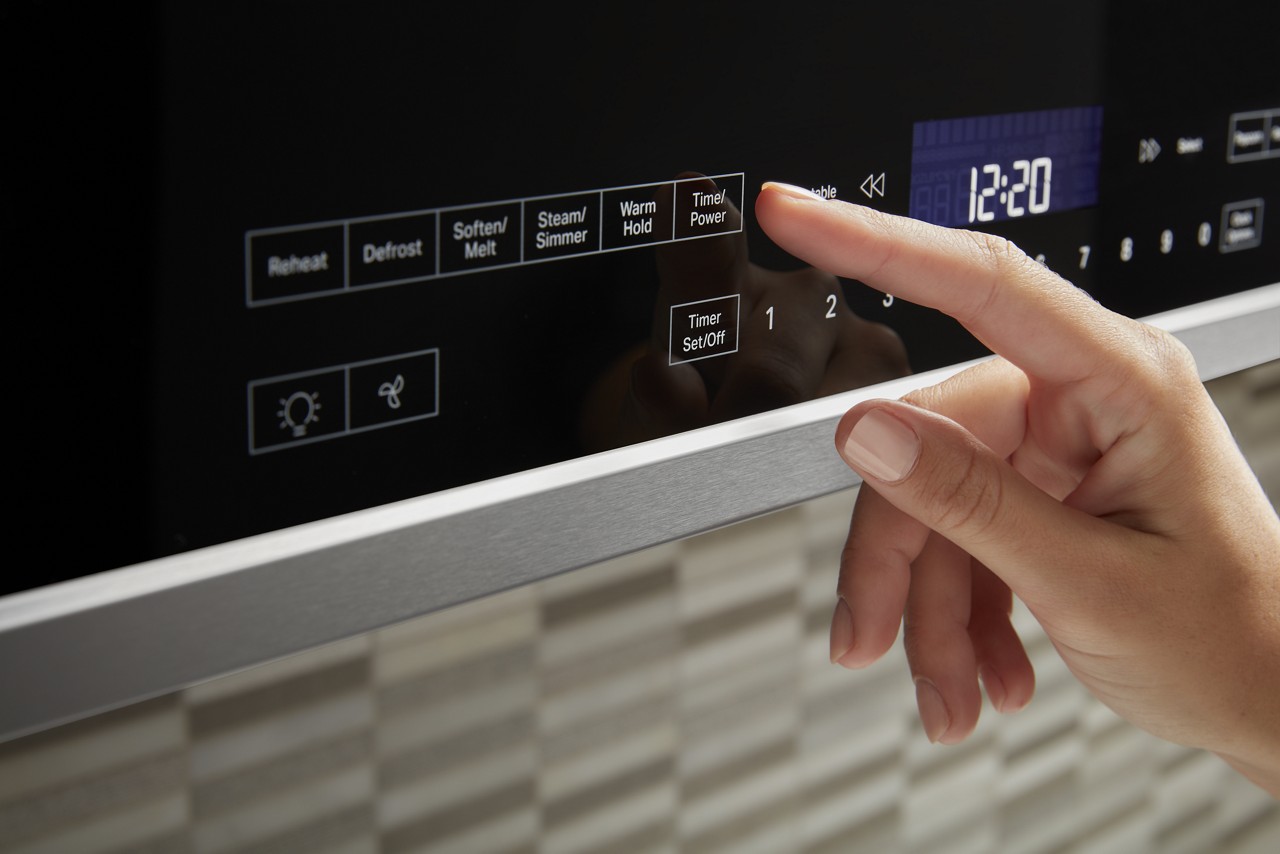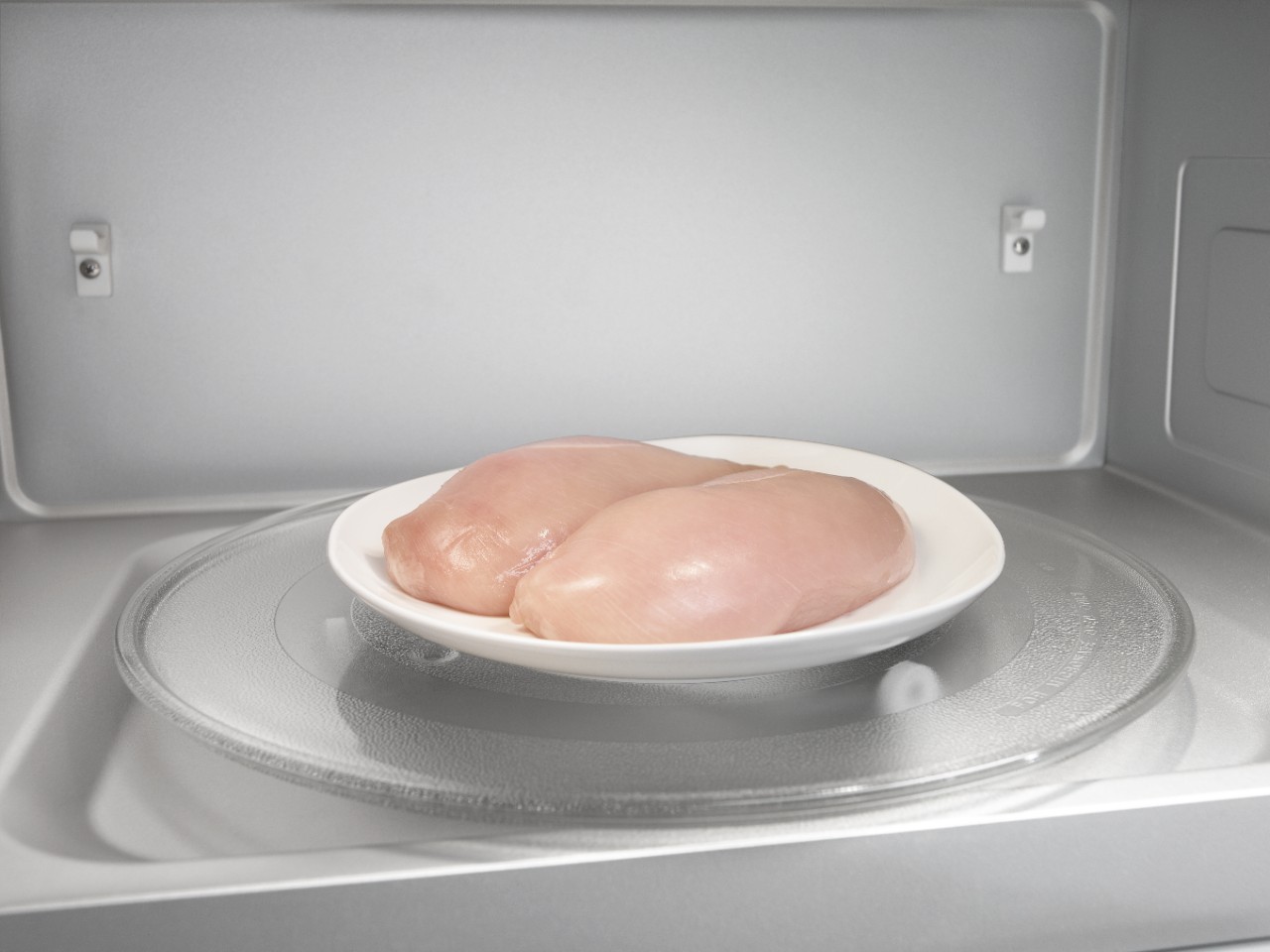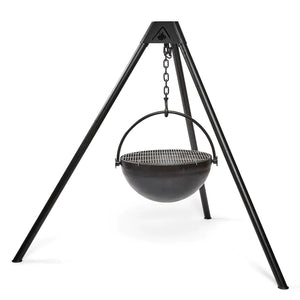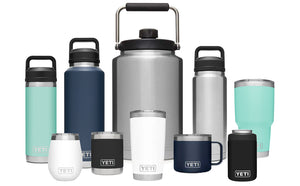Microwave defrosting: how to use your defrost setting safely

Have you ever been thinking about dinner, only to realize that you forgot to take your main entrée out of the freezer? Defrosting food can take time, but fortunately there’s a kitchen appliance that can help you get dinner on the table in time. When done properly, microwave defrosting is a safe, easy way of getting meat, vegetables and other foods ready to cook.
What is my microwave defrost setting?
Most microwaves have a defrost setting that lowers the appliances power between 30 to 50 percent. This allows the microwave to defrost food without cooking it, which allows you to thaw frozen food more quickly than in the fridge.
Is microwave defrosting safe?
You may have heard some people warn against microwave defrosting in the name of food safety. This is because improper defrosting can put food into the “danger zone,” a temperature range that allows for the growth of dangerous bacteria. To avoid this, don’t let defrosted foods sit around – instead, remove them from the microwave and start cooking them right away.
Meats: How to defrost chicken, steak, pork or fish in the microwave
When most people think of microwave defrosting, they generally have meat in mind. If you want to use your microwave to defrost chicken, steak, pork or fish, follow these steps:

-
Remove your meat from the freezer. Defrost times depend on the approximate weight of your food, so check the label or weigh your item.
-
Place your meat in a microwave safe container.
-
Press the defrost button on your microwave. If you don’t have a defrost button, set your microwave to cook at 20-30 percent of its full power.
-
Set the cooking timer. Keep in mind that most meats, such as chicken, beef or pork must defrost for 8 – 10 minutes per pound. The thawing time for fish or other seafood can vary, so check the packaging for more information. If your microwave has options for defrosting by weight or defrosting specific foods, consider using them for best results.
-
Do not leave thawing meat unattended in the microwave. Instead, stop the timer every few minutes to turn or flip the meat. This helps ensure even thawing.
-
Remove the meat from the microwave and cook immediately. You can refreeze your food once cooking is complete.
Produce: How to defrost fruits and vegetables in the microwave
While it may be faster to cook frozen vegetables in the microwave, there may be times when you want to cook produce on the stovetop instead. You’ll need to monitor frozen produce while it thaws, just as you would with meat.
-
Remove your vegetables or fruit from the freezer. Check the weight of the produce or weigh it using kitchen scales.
-
Place your produce in a microwave safe container.
-
Use your microwave’s defrost setting or set it to cook at 20-30 percent power.
-
Set the timer for 2 minutes.
-
Separate pieces out as much as possible. For items such as cooked spinach, pull or squeeze the block apart into smaller pieces.
-
Defrost the produce at 20-30 percent power for 1 minute per every 4 ounces. Check and stir the produce, then repeat until it is completely thawed.
-
Transfer to the stovetop and cook immediately.
What else can you do with a microwave?
Your microwave is great for defrosting, but this is obviously just a small portion of their overall capabilities. Whirlpool® microwaves are designed to help you cook and reheat all sorts of family favorites, making them a must-have kitchen appliance. Need to replace your current microwave? Our buyer’s guide can help you find the perfect fit for your home and family.


















